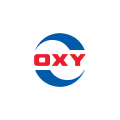Discussão sobre OXY
Postos
44Update: My latest purchases💸
Over the past few days, I have made several share purchases. I have taken the opportunity to diversify my portfolio and selectively add stocks that I consider to be promising in the long term. My focus was on a balanced mix of stable companies and opportunities with growth potential. This allowed me to consistently pursue my investment strategy and further strengthen the basis for the future development of my portfolio.
Energiekontor $EKT (+0,78%) (subsequent purchase)
Novo Nordsik $NOVO B (-0,29%) (subsequent purchase)
LVMH $MC (+0,78%) (subsequent purchase)
Pernod Ricard $RI (-2,23%) (subsequent purchase)
Frosta AG $NLM (-2,37%) (first position)
Adobe $ADBE (+0,16%) (Subsequent purchase)
Nestle $NESN (-0,85%) (Subsequent purchase)
Occidental Petrolium $OXY (+2,73%) (first position)
Sixt Vz $SIX2 (+2,89%) (Subsequent purchase)
Realty Income $O (+0,41%) (Subsequent purchase)
Ping An Insurance (Subsequent purchase)
Volkswagen $VOW3 (+0,12%) (Subsequent purchase)
The Trade Desk $TTD (+1%) (subsequent purchase)
Daikin $6367 (+0,19%) (subsequent purchase)
Danaher $DHR (+2,19%) (subsequent purchase)
Have a great rest of the week!
Let's see what the next few days bring🧐
Discounted cash flow valuations of selected shares
With my KI-gestützten DCF-Prompt I have analyzed several stocks from my portfolio that are currently trading well below their all-time highs.
The results are not binding buy or sell signals, but merely an additional building block in the decision-making process. All information is of course provided without guarantee.
🤖 All analyses were carried out with Gemini 2.5 Pro Deep Research created.
On average, each analysis researched 223 websites.
As the full reports are very extensive, the appendix contains only
- the fair values for bull, base and bear cases
- a compact summary of the most important findings
📍Lockheed Martin $LMT (+0,55%)
Current share price August 4, 2025: $421
Fair value
Bull: $570.80
Base: $495.50
Bear: $425.20
Lockheed Martin is at a critical juncture. The share price reflects deep concerns over repeated multi-billion dollar write-downs on risky fixed-price development programs, which peaked in the second quarter of 2025. Our analysis yields a fair value of USD 495.50, well above the current price, and a range of USD 425 to USD 571 in our scenarios.
The key value drivers are the record high order backlog of over USD 166bn, the strong demand for tactical missiles (MFC) and the stability of the space business (Space), which form a solid base.
The greatest leverage lies in management's ability to stabilize operational execution in the Aeronautics segment and normalize margins.
The main risks remain further unforeseen losses on classified programs, the high focus on the F-35 program and the volatility of US defense budgets. The current valuation provides a significant margin of safety for investors who believe in a stabilization of operational performance and the long-term strategic importance of the company.
📍Chevron $CVX (+0,88%)
Current price August 4, 2025: $151
Fair value
Bull: $203.80
Base: $178.50
Bear: $155.20
The comprehensive DCF analysis results in a fair value of USD 178.50 per share for Chevron, which implies a significant undervaluation compared to the current share price. The valuation range from the scenarios (USD 155.20 - 203.80) and the Monte Carlo simulation supports this assessment and shows a limited downside risk even in the bear scenario.
The key value drivers are the transformative Hess acquisition, which heralds a new era of high-margin growth, and the impressive capital and cost discipline, which manifests itself in rising free cash flow. These factors position Chevron robustly to benefit disproportionately from a stable or rising energy price environment.
The main risks remain the exogenous volatility of the commodity markets and the operational execution of the integration of Hess and the ramp-up of major projects. Overall, the opportunities resulting from the strategic realignment and the attractive valuation clearly outweigh the inherent risks in the sector.
📍Occidental $OXY (+2,73%)
Current share price August 4, 2025: $43
Fair value
Bull: $79.8
Base: $64.1
Bear: $51.5
The comprehensive DCF analysis results in a fair value of $64.1 per share for Occidental Petroleum, which corresponds to a considerable upside potential compared to the current price of $43.41. The valuation range resulting from the scenarios and simulations is between $51.5 and $79.8.
The key drivers for this value are the robust free cash flow from the scaled and highly efficient Permian Basin business and the disciplined capital allocation, which prioritizes debt reduction and thus increases shareholder value. The main risks remain the inherent volatility of commodity prices and the significant execution and political risks associated with the ambitious but as yet unproven low carbon ventures strategy.
Based on the significant discrepancy between the calculated fair value and the current market price, a buy recommendation is issued for Occidental Petroleum shares. Investors should closely monitor the development of commodity prices, the progress in deleveraging and the operational and commercial milestones of the LCV division, in particular the STRATOS project.
📍Intel $INTC (+12,08%)
Current share price August 4, 2025: $19
Fair value
Bull: $36.10
Base: $25.20
Bear: $15.50
Based on a detailed discounted cash flow (DCF) analysis using the sum-of-the-parts method (SOTP), Intel Corporation has a fair value of $25.20 per share in the base scenario. This implies an upside potential of 27.3% compared to the reference price of $19.80. The valuation range derived from the bull and bear scenarios ranges from $15.50 to $36.10 per share. The Monte Carlo simulation, which takes a probabilistic view of the uncertainties of the central assumptions, yields a median value of $24.50 and indicates that the share is trading below its fair value with a probability of around 68%.
The investment thesis for Intel is a high-risk turnaround bet that is inextricably linked to the success of the "IDM 2.0" strategy and in particular the development of the Intel Foundry (IF) business. The primary value drivers are management's ability to win one or more "significant" external foundry customers, the stabilization of market share in the core Client Computing (CCG) and Data Center & AI (DCAI) businesses and the realization of the announced cost reductions.
The main risks lie in the enormous challenge of mastering the turnaround in the established segments and at the same time building up a world-class foundry business from a position of being behind. Persistent operating losses and cash outflows from the foundry business, further loss of market share to agile competitors such as AMD and Nvidia and the failure to regain technological leadership in process technologies by 2025 represent existential risks that could turn the massive capital investments into value-destroying stranded assets.
📍Nutria $NTR (+1,9%)
Current share price August 4, 2025: $58
Fair value
Bull: $90
Base: $68.2
Bear: $45
This analysis provides a detailed fundamental valuation of Nutrien Ltd (Nutrien) based on a discounted cash flow (DCF) model. The base case scenario yields a fair value of USD 68.2 per share (equivalent to CAD 93.8). The valuation range determined by scenario analyses and a Monte Carlo simulation indicates a balanced risk-return profile.
The central investment argument is based on Nutrien's position as an integrated global market leader in an industry with positive long-term fundamentals. The valuation suggests that the stock is currently fairly valued but offers potential from an expected recovery in fertilizer prices and margins from their cyclical lows.
Key value drivers include operational efficiency reinforced by the integrated business model (production and retail), disciplined capital allocation with a focus on shareholder returns and the underlying strength of global agricultural markets supported by low grain inventories.
The main risks lie in the inherent volatility of commodity prices, exposure to the cost of key inputs such as natural gas in the nitrogen segment and geopolitical uncertainties that may impact global supply chains. A key uncertainty factor for the short-term forecast is the strong dependence on a significant increase in earnings in the second half of 2025 in order to achieve the company's forecast after a weak first quarter.
Occidental Petroleum further increased...
$OXY (+2,73%) I bought a further 350 shares, bringing the total to 1000. I expect a sharp rise in oil prices in the near future. Oil shares have absolutely "gone under the wheels" in the last 12 months... Why Occidental??? They plan to store Co2 where they have extracted oil and gas in the future and receive climate certificates for this and then sell these to companies...
Small portfolio update If you're interested, you can add your two cents. Portfolio sale:
$CCL (-1,39%) One of my long-term stocks has been trimmed back from overweight (4%) to normal size (2.5%). A few months ago I bought at €15 and €17 and have now partially sold at €25. The share will not disappear completely for me. I am hoping for a recovery of €30+. If it falls below €20 again, I will slowly overweight again. This game has been played from time to time for the last 5 years and the positive management of the debt, in addition to the constant good news, slowly speaks for a breakthrough.
$BAYN (+0,35%) I bought in at the beginning of April at €22, but have now decided to close the position at just under €27. I actually wanted to hold the share long, but somehow I can't warm to it. Perhaps it will find its way back into my portfolio at some point.
$AVGO (+3,05%) In the April crash, I bought the stock at €151 (2% weighting) using a Lombard loan (10% portfolio size), among other things, and the position has now been closed at €224. More was not my target recovery to old ATH.
$9618 (+1,79%) Unfortunately, this position was closed with a minus of 13%. The reason for this was the annual rebalancing in which the China portion had become too large for me. As I was convinced by $1211 (+1,43%) , $BABA (+4,63%) and $PDD (+3,37%) JD had to give way.
Portfolio purchase:
$OXY (+2,73%) Bought another small tranche. After the 10% slump, I had some capital left over, which was invested at 36.50. One of my larger individual bets with a 5% portfolio weighting.
A new addition to the portfolio is $TX (+0,33%) with a small position of 1%. The reason sounds stupid, but it's a little chat GPT experiment. I wanted to be told which stocks were selected according to the Columbia Buffet approach. I was given 5 suggestions, some of which were frankly garbage. But this stock somehow got me hooked. Which is why I took the risk with only 1% of my portfolio (just over 1k).
Note:
My single stock portfolio Smartbroker plus makes up 2/3 of the asset class equities.
1/3 are Etf's with Trade Republic.
In total, equities make up 90% of my investable assets.
In addition to my three equity ETFs, TR holds my real estate REIT ($O (+0,41%) approx. 5%), as well as my gold ETC ($SGBS (+0,42%) 2.5%) and my gold miner Etf ($GDXJ (+1,07%) 2.5%) which make up the remaining 10%.
Approximate total assets 100k (more like 95k :/ due to volatility) but debt free (except for a 3.5k balance on the Lombard loan). I have been investing since 2020 and am 28 years young.
Podcast episode 95 "Buy High. Sell Low."
Subscribe to the podcast to stop socialism.
00:00:00 Iran & Israel, oil
00:22:30 US dollar / euro
00:58:30 Gold
01:32:30 Occidental Petroleum
01:41:50 L3Harris
01:50:50 Expropriations in Berlin
Spotify
https://open.spotify.com/episode/2MF9C61sRpjgheox2n5uam?si=KyiIC6ykQgS1ezCk7PqT1Q
YouTube
Apple Podcast
$OXY (+2,73%)
$LHX (+1,63%)
$GLD (+0,65%)
#gold
#öl
$SHEL (+2,14%)
#usd
#usdollar
#iran
#israel
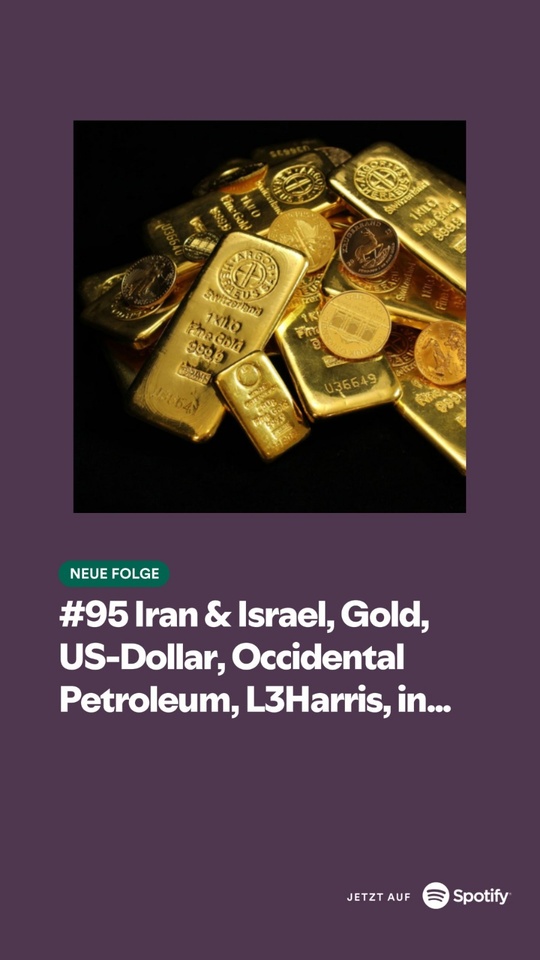
Portfolio presentation
Hi Dear GQ Community,
Today I wanted to share my portfolio with you and see what you think or say about it. You are welcome to make suggestions for improvement. 😃
First of all about me, I am 31 years old, father of 2 children and only work as a service technician 👷♂️unterwegs which is why I currently have no more than 100€ - 130€ per month available to invest. I always thought with your high sums that I would not divide my portfolio because it is so small. But today I'm just going to do it 😅.
I've only been investing since the end of May 2025. I'm looking for dividends that are partly reinvested and partly paid out. But I want to save for old age in the long term to possibly supplement my pension 🧓later on. 💰💸
Now to the portfolio. I don't currently have a plan for how much of my budget is going where. I'll look at it for a month and then decide who has performed best 📈 and who has performed less 📉.
I currently have:
ETF savings plans:
- $IWDA (+0,8%) with monthly 25€
- $VHYL (+0,65%) with monthly 15€
- $EIMI (+1,03%) with monthly 10€
Individual shares:
Crypto:
The savings plans are saved every month and the individual shares are saved more or less depending on the month. Because $BTC (+1,4%) to be honest, I'm in it just for fun. I'd like to see where the journey takes me.
As I said, I'll decide exactly how it will be divided up next month when I see who has performed best by then. And then it will be adjusted monthly.
At the moment my portfolio is only in the red with the order fees from Trade Republic, if these weren't there I would already be slightly in the black. But I am investing for the long term and am not out for day trading.
Now I'm curious to hear what you have to say, and please don't completely tear me apart 😅.
I think it's great that you are a service technician. And you should definitely delete the "only". And father of 2 children is just as great. You can be extremely proud that you still manage to invest 😘.
I would pay more attention to diversification in the individual stocks in your portfolio. Coca Cola and Pepsi together is not necessary. You can already see today where that can lead. Otherwise, I would perhaps expand Europe. And don't make the positions too small
Iran Israel geopolitical tensions
$OXY (+2,73%)
$OD7F
$OOEA
$XOM (+1,25%)
$BRNT (+3,02%)
$SLB (+3,49%)
$COP (+3,45%)
$WENS (+2,62%)
$EXH1 (+3,47%)
$SHEL (+2,14%)
$PETR4 (+2,36%)
The tensions will be resolved quickly. High oil prices harm American consumers. Trump wants to prevent that. He also wants to conclude an agreement with China. China imports a lot of oil from Iran, which will hurt them. The same applies to India, with which Trump also wants to conclude an agreement.
Trump is pro-Israel and wants to help Israel achieve its military goals. However, he will not give Israel much time to do so. It will either be over as quickly as the Six-Day War or after two weeks at the latest, enforced by Trump.
Crude oil could rise to 130 dollars in the worst case (warns JP Morgan) Strait of Hormuz - possible consequences
$OXY (+2,73%)
$OD7F
$OOEA
$00XM
$BRNT (+3,02%)
$IS0D
$SLB (+3,49%)
$COP (+3,45%)
$WENS (+2,62%)
$EXH1 (+3,47%)
$WNRG (+1,75%)
$SC0V (+3,11%)
https://oilprice.com/Energy/Oil-Prices/JP-Morgan-Oil-Could-Hit-130But-Were-Still-Calling-60.html
Around 20 % of global oil production flows through the Strait of Hormuz
Around 90% of Iran's oil exports pass through the Strait of Hormuz every year, which corresponds to around 83% of all Iranian exports. This is due to the fact that almost all Iranian oil export terminals and major ports are located in the Persian Gulf and there are no significant alternative routes such as deep-sea piers or pipeline infrastructure outside the Strait.
The Strait of Hormuz is a narrow stretch of sea between Iran and Oman.
It is only 33 kilometers wide, but almost 21 million barrels of oil are transported through it every day.
That is equivalent to one in every five barrels consumed on earth. It is by far the most important energy bottleneck on our planet.
For this reason, it would be a disaster if the Strait of Hormuz were even partially closed, we would lose access to more than 10 million barrels of oil per day.
There are no realistic alternative routes. Pipelines? Already almost at capacity. Alternative ports? Too small.
You can't divert 20% of oil traffic overnight.
After some research and my assessment what would happen/what would be the consequences if the Strait of Hormuz was blocked, closed:
Strategic:
The Strait of Hormuz is the world's most critical maritime bottleneck. Around 20% of the world's traded crude oil and 30% of the world's liquefied natural gas supplies pass through these narrow waters every day. If Iran were to block or significantly disrupt the Strait with mines, anti-ship missiles, drone attacks or speedboats, this would not only trigger a regional crisis, but also cause a systemic shock to the global economy, supply chains and security architecture.
Presumed initial effects:
Peak energy price: crude oil could rise by 30 to 60 US dollars within a few days. Brent could reach 130 to 150 US dollars, depending on the expected duration of the disruption. Natural gas, especially liquefied natural gas for Asia, would become acutely scarce. Expect *JKM LNG benchmarks in Japan and Korea to rise.
*JKM stands for Japan Korea Marker and is an important price benchmark for liquefied natural gas (LNG) in the Asian market, especially for deliveries to Japan, South Korea, China and Taiwan. The JKM is calculated by S&P Global Platts and reflects the spot market price of LNG cargoes delivered ex-ship (DES)
Naval and kinetic escalation: the US Fifth Fleet stationed in Bahrain would be rapidly mobilized. Mine sweeping, naval escorts and possibly kinetic attacks on Iranian coastal positions would result. Israel could take preventive action in Lebanon or Syria, fearing a regional encirclement.
Consequences:
Global trade shocks: energy shipments would have to be rerouted via the Suez Canal or the Cape of Good Hope, increasing costs and delivery times. Transport insurance premiums are rising rapidly. Prices for container transportation are rising again, especially to Europe and Asia. Additional port congestion and cascading logistical delays are to be expected.
Macroeconomic:
The central banks of energy-importing countries (India, Japan, EU) begin defensive foreign exchange market interventions and emergency procurement of energy. A reduction in reserves, a redistribution of state assets and possible covert bilateral agreements with the Gulf states are to be expected.
Supply chains will be strained:
Fertilizer prices are rising due to natural gas shortages. Food prices, especially wheat and soybeans, are soaring. Countries that rely on subsidized energy (Pakistan, Egypt, Indonesia) are confronted with currency problems and domestic instability.
Sovereign credit risk:
Rising energy costs are putting pressure on emerging markets' current accounts. Countries are coming under increasing pressure, leading to IMF interventions and sovereign debt downgrades. The periphery of the eurozone comes under renewed pressure.
US financial and military pressure:
Rising oil prices push inflation back up, while the Fed is under pressure to cut interest rates. Interest expenses for US debt are rising. At the same time, defense spending is soaring. The demand for dollars from foreign central banks is weakening, while the supply of government bonds is increasing. This increases the risk of a long-term liquidity vacuum. Interest rates could rise even if growth stagnates.
China, the main buyer of Iranian oil, finds itself in a geopolitical dilemma. It could intervene diplomatically or even provide a naval escort for Iranian supplies. This would be a direct challenge to US hegemony. Russia benefits from higher energy prices and global distraction, strengthening its influence in Ukraine.
Maritime cyber sabotage, hacker attacks on oil infrastructure or psychological disruption campaigns against the Gulf States or US critical infrastructure could also have consequences.
Other probable consequences of a closure of Hormuz:
- Re-introduction of energy shortage prices in markets where energy was priced in abundance
- Undermining confidence in the dollar and the US policy of deterrence, especially if the conflict drags on
- Acceleration of BRICS-led de-dollarization efforts as energy security becomes sovereign again
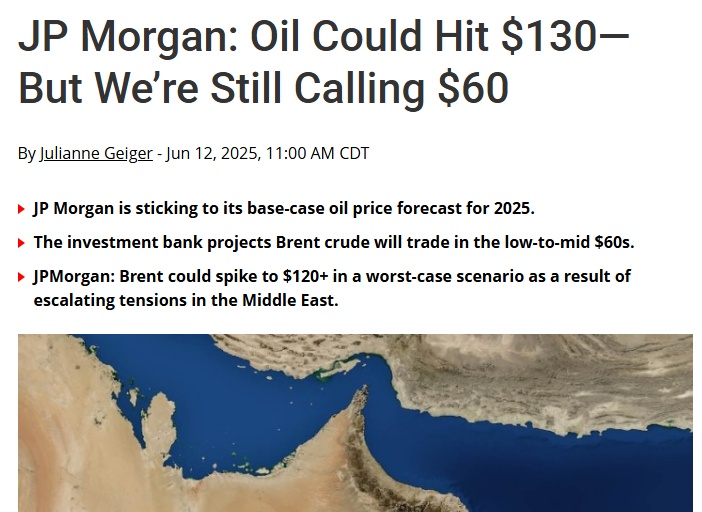
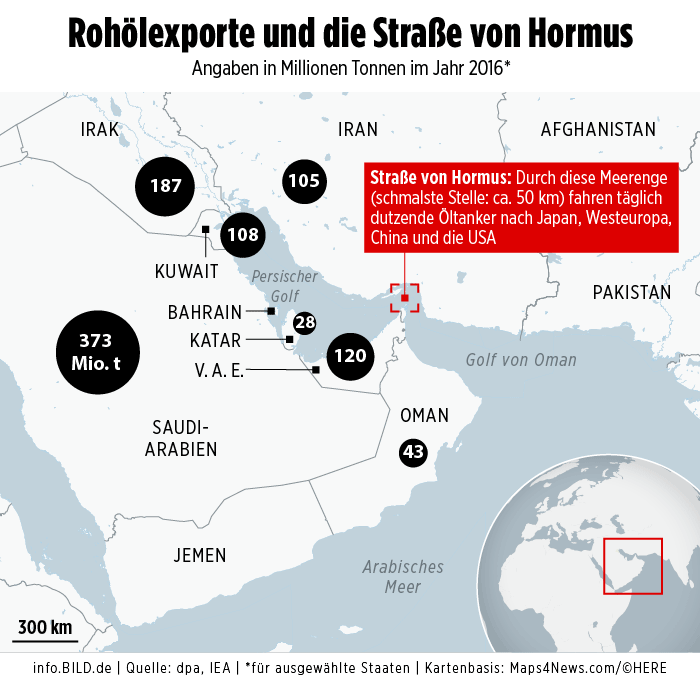
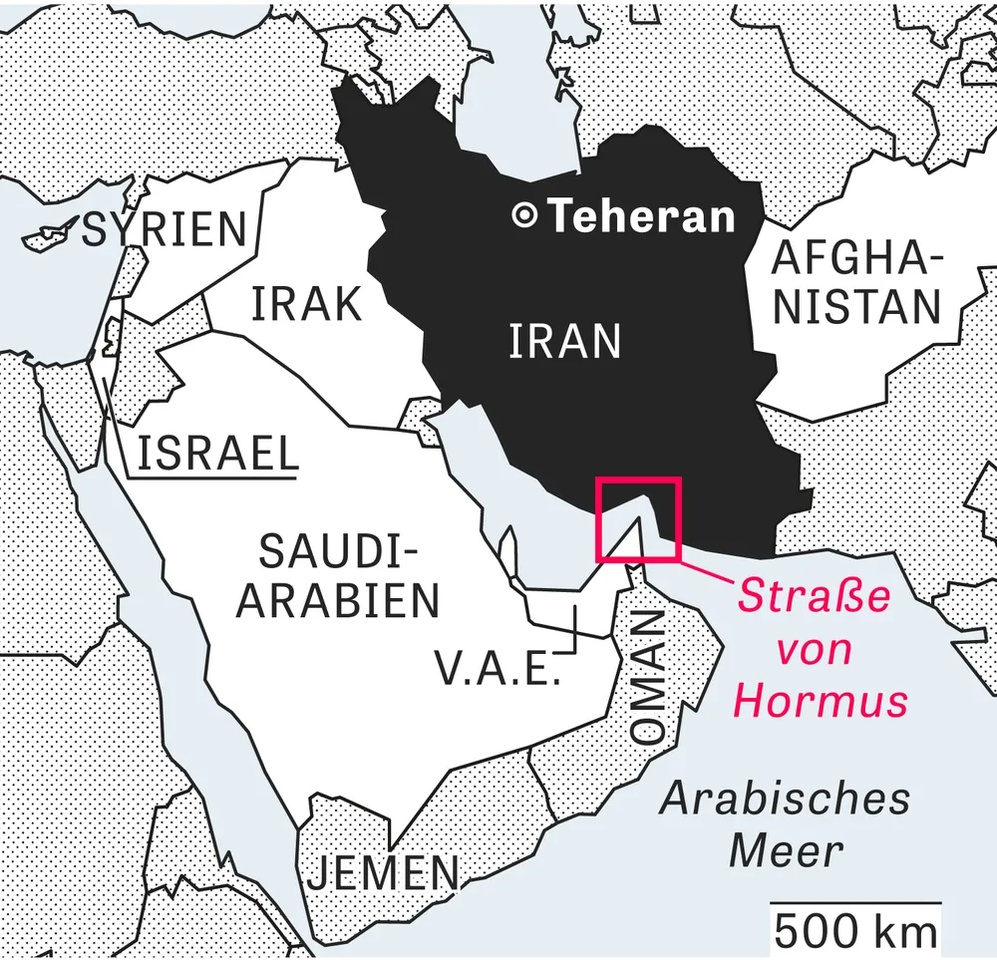
+ 1
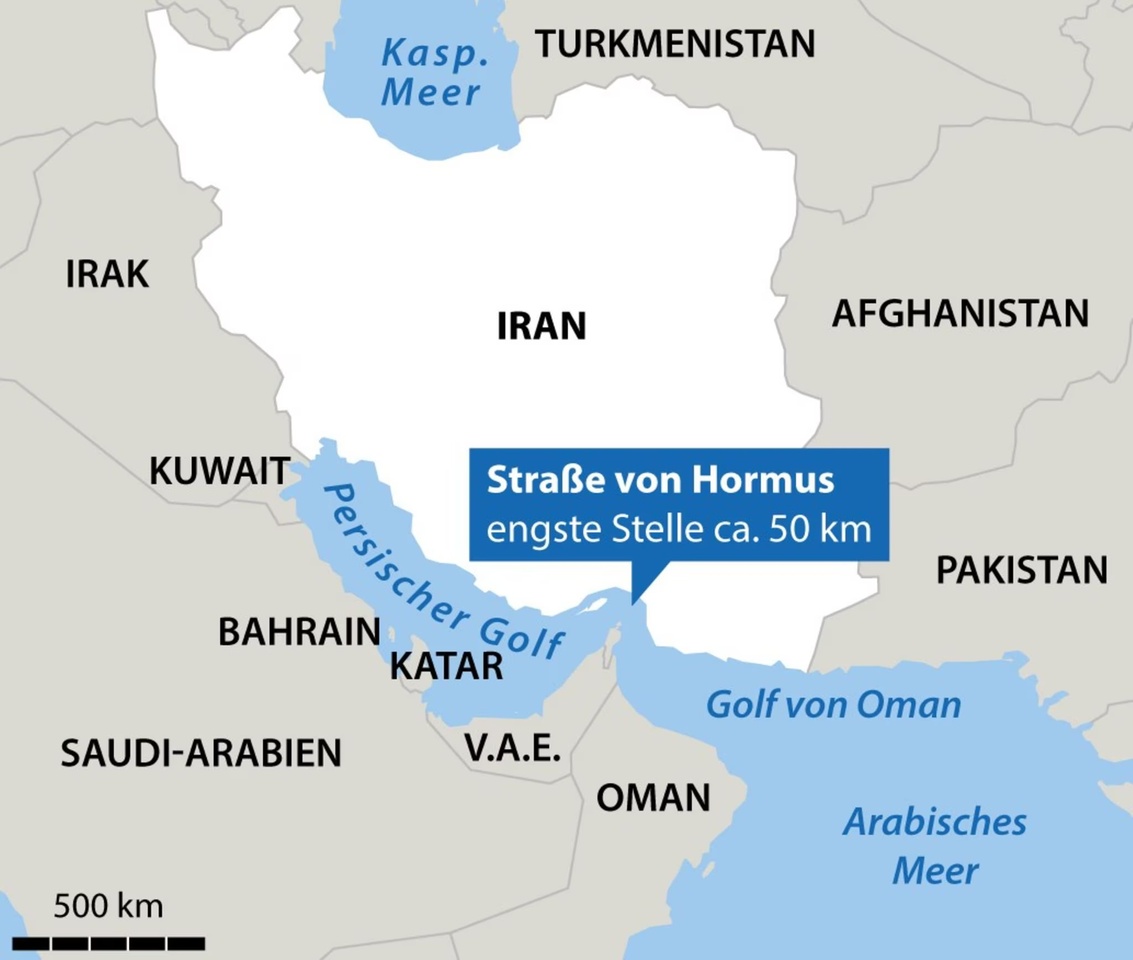
What was Warren Buffet thinking with his oil investments and is he wrong in the long term? (Sector analysis energy and utilities)
When $BRK.B (-0,25%) started during the Corona crisis $OXY (+2,73%) and $CVX (+0,88%) many people didn't understand this. Tech was more popular than ever at the time and oil was considered dead. A short time later, it became clear that oil was here to stay. As discussed in the last market review, the energy sector was one of the best investments during the pandemic.
However, this was probably a special boom for fossil fuels that was to remain a one-off. Since the price explosion, the energy sector has been in a very weak trend and is the worst performing sector directly after healthcare (which could therefore also be very interesting at the moment).
In particular, the dynamic has shifted from oil & gas to electricity - which, however, is not counted as part of the energy sector in the classic GICS but as part of the utilities sector. The reason for this is, of course, the expected triumph of artificial intelligence and the associated hunger for energy in data centers. The best-known company in the sector is probably $NEE (+0,48%)
In any case, Buffet's investments in fossil fuels have not been particularly worthwhile to date, as he may have made a favorable initial entry, but then often bought at unfavorable prices. At the current point in time, the investment case has not yet worked out. It is therefore an interesting question whether Buffet is speculating on something that has not yet been understood by the market or whether it is one of the rare situations in which the good Warren has miscalculated something (think of the disaster around $KHC (-0,97%) ). At any rate, it is difficult to understand what Buffet was thinking and whether his theory is still intact.
Incidentally, I myself am not invested in either utilities or energy, which I think is a great pity. However, I have not been able to identify any company that is currently really convincing in terms of its figures and can be described as a quality company.
What about you? Do you have any oil, gas or electricity stocks in your portfolio?
(And the < 5% exposure in the World ETF does not count)

Títulos em alta
Principais criadores desta semana
